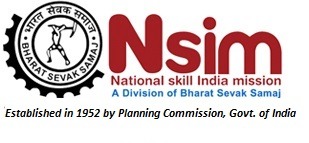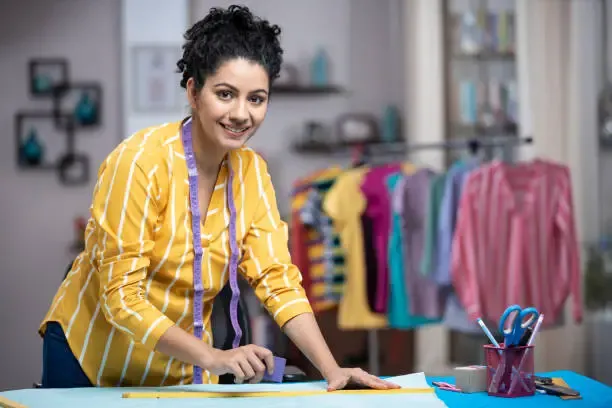Stories you may like
Career Opportunities in Fashion Designing 2025: Complete Industry Guide & Salary Insights
The year 2025 has brought about a seismic shift in the fashion design industry, prompted by digital innovations, sustainability mandates, and changing consumer behaviour. With many students now enrolling in a fashion design course with fashion modules, the design field has expanded into a multifaceted journey. The range of roles within the industry varies from traditional atelier to virtual fashion environments.
In this article, we have curated a comprehensive guide to walk you through the career opportunities in fashion designing, delving into emerging opportunities as well as conventional practices, salary trends, educational pathways, and regional insights to help you make your next move in the world of fashion.
State of the Fashion Industry in 2025
The current state of the fashion industry is fogged with uncertainties due to the evolving state of economic and consumer values. The BoF-McKinsey report, published in Business of Fashion 2025, records that as much as 80% of the established fashion designers in the industry do not anticipate an improvement in the industry conditions and less than 20% of consumers will be spending the same or less on fashion products, indicating a focus on affordability and value.
1. Global market size and growth statistics
The fashion industry spreads massively worldwide, with a value of over 1.7 trillion dollars globally. However, the recorded growth is inconsistent throughout the market. While the developed economies are performing a constant growth, emerging markets such as India and Southeast Asia are performing slowly but steadily with a foresight for expansion. In 2025, Fibre2Fashion recorded that over 67% of fashion executives believe in the emerging market of India and are willing to invest in the high-growth.
2. Employment trends and projections
The conventional sectors have defined their ways of work and have stayed true to the methods, resulting in slow hiring. Whereas, the digital and sustainability-focused roles are drastically rising. The evolving mindset of consumers and a shift towards technology have brought about demand for specialists in e-commerce styling, virtual sampling, and sustainable material sourcing.
3. Salary ranges by specialization
According to data derived from PayScale India, Ambition Box, and Glassdoor India for 2025, the current salary trends approximately look like:
➤ Ready-to-wear Designer (Mid-Market): ₹6,00,000- ₹12,00,000 anually
➤ Haute Couture Designer: ₹12,00,000- ₹30,00,000+
➤ Technical Designers: ₹7,00,000- ₹11,00,000
➤ Digital Fashion Roles: ₹8,00,000- ₹14,00,000, varying with skillset and software fluency.
4. Geographic opportunities
The saturation for the fashion industry favours capitals such as London, Paris, Milan, and New York, leading as key hubs for innovation and legacy brands. Delhi, Mumbai, Lagos, and Seoul are recently gaining traction, expanding rapidly and offering ground for local talent and global recognition.
Traditional Fashion Design Career Paths
The established paths in the industry continue to lay the foundation of fashion careers. The runway and retail have a major impact on the following paths:
Ready-to-Wear (RTW) Designer
The ready-to-wear is one of the largest sectors in the fashion industry, which operates across various levels, including luxury, mid-market and mass production. The role of professionals involved in this sector includes decision-making and planning of seasonal releases, keeping abreast of the trends, developing cohesive collections, and liaising with production teams.
How to become a fashion designer?
To work in this sector, an individual requires a fashion design course or equivalent certification, proficiency in software tools such as CAD, textile knowledge, and strong visual communication skills. A career in the ready-to-wear sector can take you from an assistant designer, junior designer, head designer, and finally to a creative director in the order.
According to a study posted by team Careers 360, the remuneration varies by segments, with the mid-market professionals in India bagging up to ₹8,00,000 annually, along with international travel opportunities and performance bonuses. Masaba Gupta and Anita Dongre are renowned designer collections offering an illustration of the role.
Haute Couture Designer
Haute Couture is a realm of designers operating from ateliers, running exclusive labels. Unlike the mass-produced fast fashion, Haute Couture displays a range of garments built from scratch and often handmade. It gains the name from the experience it offers to the clients with one-on-one consultations, fittings done to every specific client’s body shape, and custom sketches to fit the garment to the client’s expectations.
Haute Couture ateliers offer apprenticeship opportunities to designers looking for hands-on expertise with premium labels. The apprenticeship extends responsibilities from the design niche to managing PR and sourcing elite clientele for the brand. The role demands entrepreneurial acumen.
The creations are often displayed at events with high visibility to relevant clientele, extending the role of designers to collaborate with stylists and publicists. In India, Rahul Mishra, Gaurav Gupta, Sabhyasachi Mukherjee, Ritu Beri, Rohit Bal, Manish Malhotra, Anamika Khanna, Masaba Gupta, Neeta Lulla, and Abu Jani Sandeep Khosla +more! represent this segment.
Technical Design Careers
Technical careers are the backbone of the fashion industry in this age. They ensure that creative visions translate into wearable garments. Certain technical specialists include:
- A Pattern Engineer: Pattern engineering brings precision to the patterns, and a fit specialist further refines garment fit based on feedback.
- A production technologist and quality assurance ensure the consistency in timely production with minimal defects and adhere to manufacturing standards.
- A technical package developer prepares spec sheets, measurements, and documentation for offshore manufacturers.
The scope of fashion designing has experienced a drastic rise with tech-integrated roles and expanding consumer needs. Here is a glimpse at the emerging career paths in the fashion industry that are gaining momentum:
Digital Fashion Careers
With metaverse fashion weeks and digital avatars gaining prominence, virtual roles are in demand. Certain high-traction virtual roles are:
·Virtual fashion designer
A virtual fashion designer is responsible for curating displays and collections for digital platforms, avatars, and NFT wearables. Such as Soumya Jain (XR Couture), Accidental Cutting India Collaborations, Neha Singh (Founder, Tria), The Fabricant, Amber Jae Slooten, etc.
·3D clothing animator
A 3D clothing animator dominates the fashion in the gaming and virtual industry. The animator is responsible for designing digital garments for characters in gaming and VR. For instance, Toonz Animation India, Kaarigar Studio, Blue Zoo Animation Studios, Burberry X Mythical Games, Balenciaga X Fortnite are some of the prominent designers in animation.
·Digital fitting specialist
A digital fitting specialist uses body-scanning tools and simulation software to enhance virtual try-on experiences in order to assist online shopping platforms.
These roles emphasise software skills and technical training. Softwares such as Clo3D, Blender, or Marvellous Designer are widely sought. The technological dependence in these roles makes it possible to explore remote opportunities within the sector.



User's Comments
No comments there.